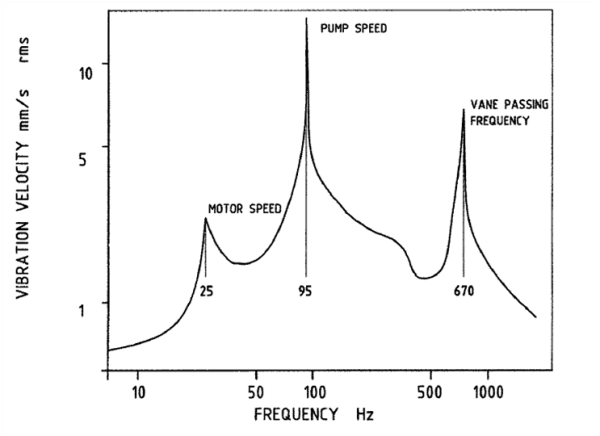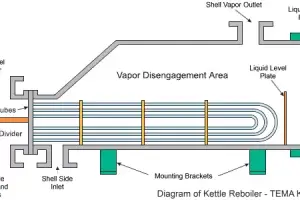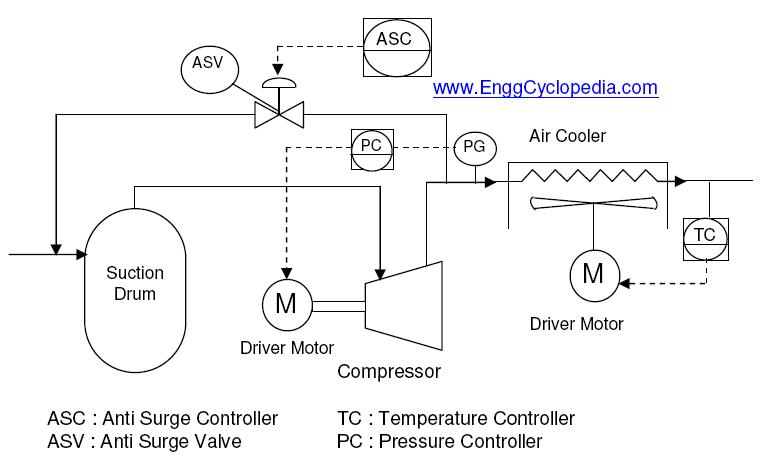The goal of compressor sizing calculations is often to find out the efficiency of the compressor and power required to drive that compressor, given the gas composition, flow rate, temperature & pressure conditions at inlet and outlet pressure requirement.
Let's look at equations frequently used in compressor calculations to determine power and efficiency of the compressor along with their description and significance.
Important equations for compressor calculations
Gas compression can be expressed in terms of pressure and temperature variation as,
PVn = constant
A compression process typically following this pressure volume relation is known as polytropic process. If n=1, the process is isothermal (constant temperature). If n=γ=CP/CV, the compression is adiabatic compression (no heat exchange with the surrounding). Most gas compressions generally follow the adiabatic curve. Hence compressor equations are also based on adiabatic curve with n=γ,
PVγ = constant
Let subscripts 1 and 2 stand for inlet and outlet process conditions of the compressor. Then the pressure ratio of the compressor is P2/P1.
P2/P1 = (V1/V2)n ... Polytropic compression
P2/P1 = (V1/V2)γ ... Adiabatic compression
The head developed by the compressor is expressed in following compressor equations.

Adiabatic compressor head equation
Polytropic compressor head equationThis head when multiplied by the volumetric flow of gas (Q) gives the compressor power equations.

Adiabatic compressor power equation
Polytropic compressor power equationAdiabatic efficiency of the compressor is calculated as,
Adiabatic efficiency, η = (Actual Polytropic work / Adiabatic work)

Adiabatic efficiency equationPolytropic efficiency or hydraulic efficiency for a compressor is represented by,

Polytropic efficiency equationConsidering the mechanical efficiency of a compressor
These equations will provide us with theoretical values of the power requirement and the thermodynamic efficiencies of the compression process. But then we also need to account for the mechanical efficiencies and loss of power in driving the compressor equipment as well as the electrical motor.
Putting together all these factors, we can finally arrive at practically how much power is going to be needed to drive a compressor with given process parameters.




